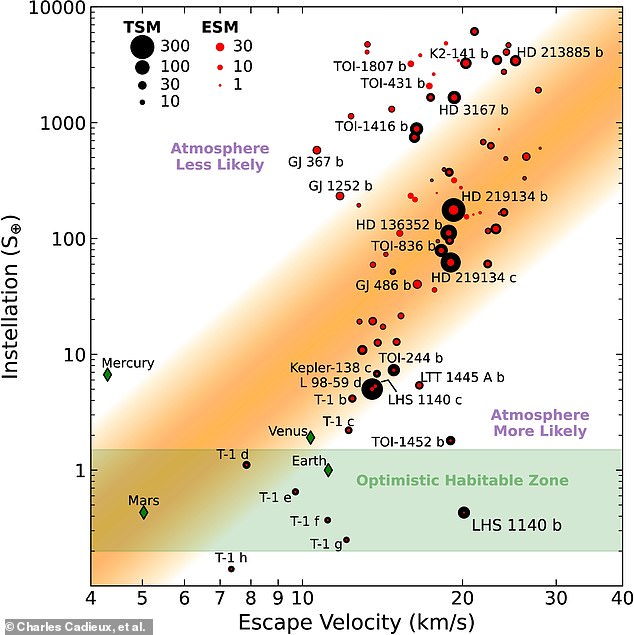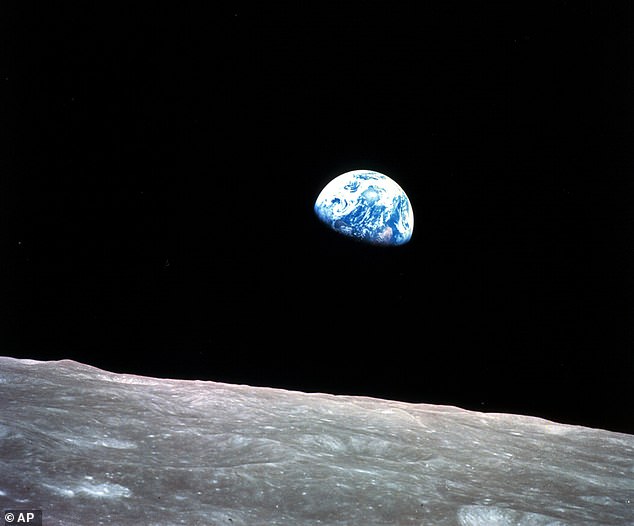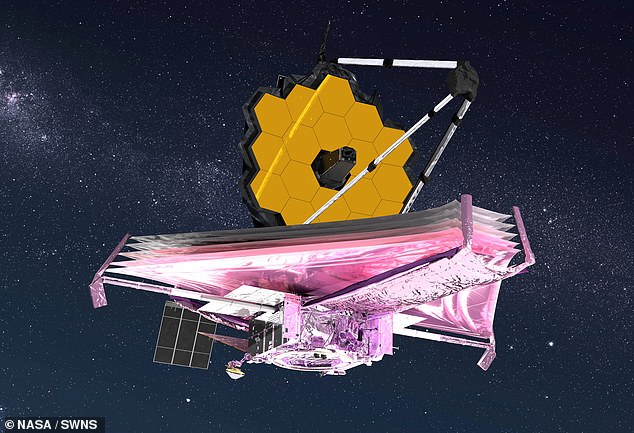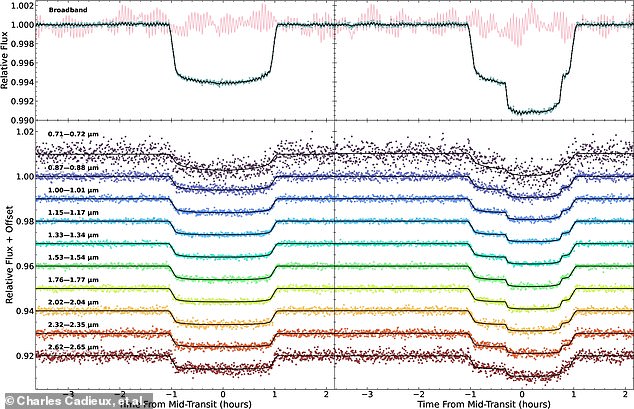Is This Where Aliens Are Hiding? NASA’s James Webb Discovers a ‘Super-Earth’ Planet 48 Light Years Away — and It Could Have the Right Conditions to Support Life
Ever since humans began looking up at the stars, we have been fascinated by the search for life beyond Earth.
But that search could soon be over, as scientists have discovered a planet that could be our “best chance” to find alien life in the cosmos.
An international team of scientists used observations from NASA’s James Webb Space Telescope (JWST) to analyze the atmosphere of an exoplanet called LHS 1140 b.
Their observations confirmed that the nearby planet may have an ocean of liquid water and even an atmosphere rich in nitrogen, like Earth.
Lead author Charles Cadieux of the Université de Montréal said: “Of all the currently known temperate exoplanets, LHS 1140 b may represent the best chance to one day indirectly confirm that there is liquid water on the surface of an alien world outside our solar system.”
Scientists have discovered a distant exoplanet (pictured) that could be our best chance to find alien life
While we don’t know exactly what extraterrestrial life looks like, scientists are pretty sure it needs liquid water to survive.
The exoplanet LHS 1140 b is located 48 light-years from Earth in the constellation Cetus.
This places it within its star’s ‘Goldilocks zone’, the zone in which water can exist as a liquid.
This exoplanet is about six times more massive than Earth and orbits a small red dwarf star about one-fifth the size of the sun. The star is at a distance cool enough for water to form.
Recent research has shown that the exoplanet had significantly less mass than an object of its size should have.
This left researchers with two options: either LHS 1140 b was a “mini-Neptune” composed mostly of rotating gas, or it was a “Mega-Earth” covered in liquid or frozen water.

The exoplanet LHS 1140 b is located in its star’s habitable zone, the region in which liquid water can exist. Its large mass also gives it a high enough exit velocity to accumulate a thick atmosphere, as demonstrated in this diagram of planets
To determine which was the case, researchers combined data from the JWST and other space telescopes such as Hubble and Spitzer to perform the first “spectroscopic” analysis of LHS 1140 b.
Because certain molecules block different wavelengths of light, by measuring the frequencies of light passing by the planet we can tell what chemicals are present.
Their analysis shows that LHS 1140 b is much more likely to be a “water world” or “snowball” with a rocky core, rather than a gaseous mini-Neptune.
Even more exciting, initial analyses suggest the exoplanet may have a thick atmosphere, much like Earth’s.
That would give the planet a much greater ability to trap heat from its star and increase the chance of a stable climate, all important factors for the existence of life.

Like Earth (pictured), this exoplanet could have a thick, nitrogen-rich atmosphere that would act as an insulating blanket for the formation of liquid water.
Dr. Ryan MacDonald, an astronomer from the University of Michigan who worked on the paper, said: “This is the first time we’ve seen any evidence of an atmosphere on an exoplanet in the habitable zone that is rich in rocks or ice.”
While they caution that more observations of the JWST are needed, the atmosphere could be rich in nitrogen. Nitrogen makes up 78 percent of Earth’s atmosphere.
Dr Macdonald added: ‘LHS 1140 b is one of the best small exoplanets in the habitable zone that can support a thick atmosphere. It could be that we have found evidence of air on this world.’
Like the Moon’s orbit around the Earth, LHS 1140 b has a synchronous orbit, meaning one side is permanently turned away from the star.
Although researchers believe the exoplanet is most likely a frozen “snowball,” this could mean there is liquid water on the side that has been warmed by the star.

To learn more about the exoplanet’s atmosphere, the researchers are using data collected in 2023 by the James Webb Space Telescope (pictured)

Because certain molecules block different wavelengths of light, researchers were able to analyze the light that passed by the exoplanet to figure out what chemicals might be present. This diagram shows the light spectrum collected from LHS 1140 b
If LHS 1140 b does have an atmosphere, it is likely to be a Bullseye Ocean with a diameter of about 4,000 kilometers. That is half the surface of the Atlantic Ocean.
The surface temperature of this ocean can be a pleasant 20°C (68°F), which is higher than the UK sea temperature in summer.
While this is not the first planet discovered within its star’s habitable zone, it does offer scientists one of the best opportunities for further study.
Compared to the stars orbited by exoplanets in the TRAPPIST-1 system, the star this exoplanet orbits is relatively quiet.
This makes it easier to distinguish the effects of the atmosphere from the random noise of sunspots and solar flares.
According to the researchers, this is a unique opportunity to study a planet that may support life.
